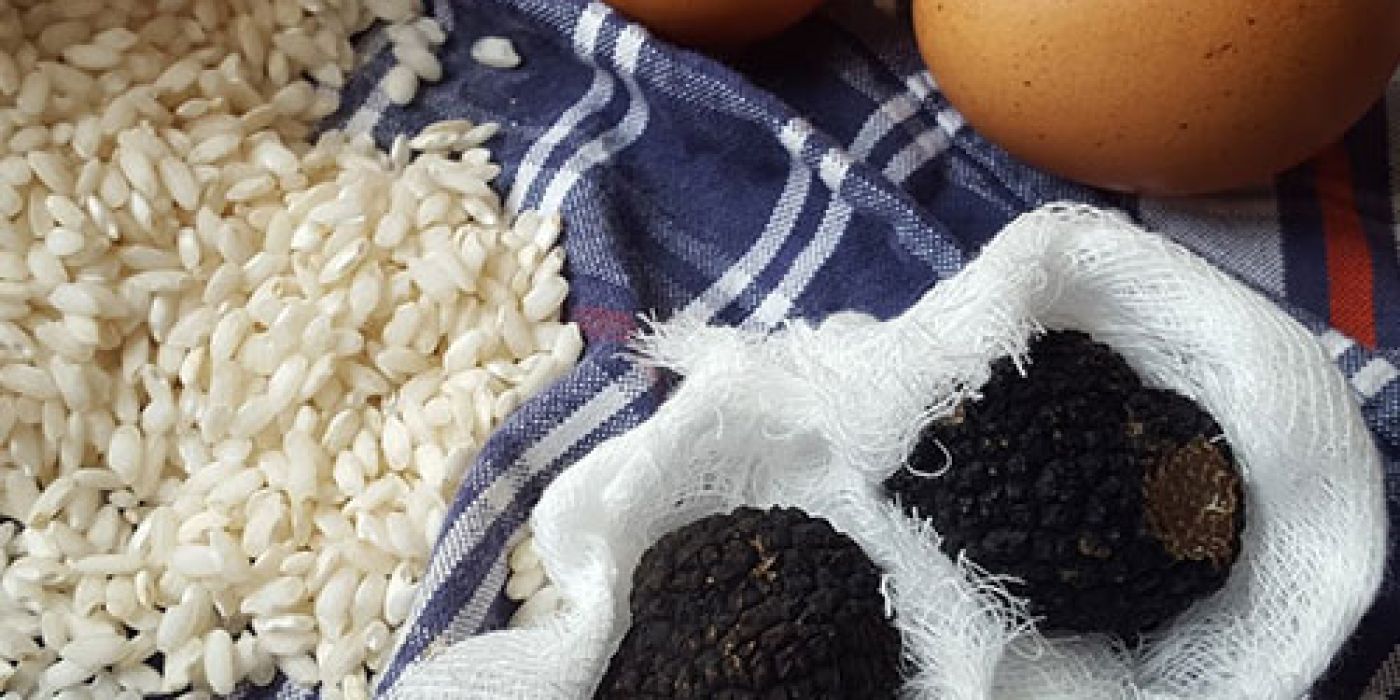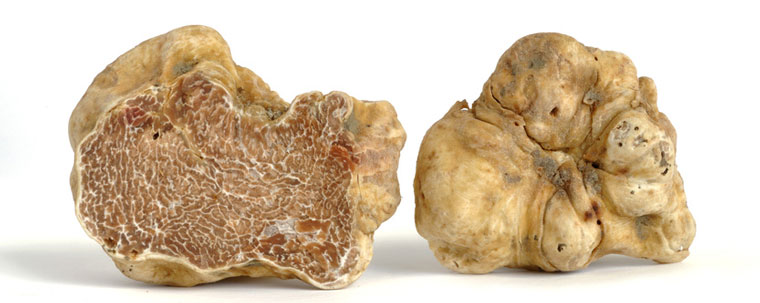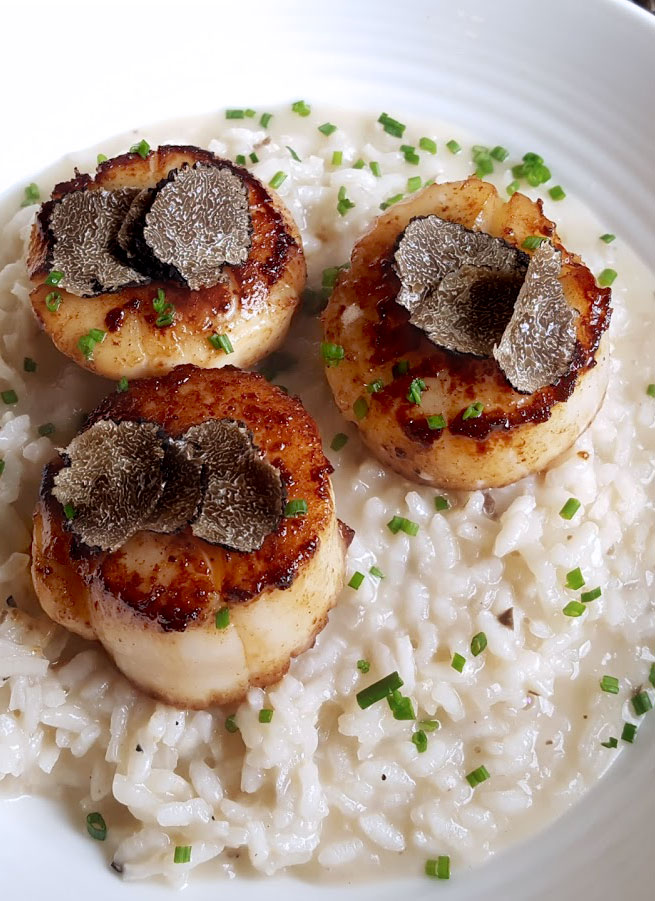The Truffle Primer

Hey, what exactly are truffles? Truffles are the fruiting body of a fungus closely related to mushrooms that, starting in spring, form several inches underground at the base of certain trees, mainly oak and chestnut. They grow best within a swath that extends from just south of Madrid to the center of France and includes some of the famous truffle regions in both France and Italy.
Hey, what exactly are truffles?
Truffles are the fruiting body of a fungus closely related to mushrooms that, starting in spring, form several inches underground at the base of certain trees, mainly oak and chestnut. They grow best within a swath that extends from just south of Madrid to the center of France and includes some of the famous truffle regions in both France and Italy.
Truffles begin to form in the spring and are fully formed by around June. They continue to mature through the summer and into the fall. Most truffles are harvested between mid-November and the beginning of March.
White, Burgundy and Black—What's the difference?
There are over 200 different species of truffles out there, but only a handful of them are prized. The quality of the truffle is always in the aroma, so get your noses ready. Here's a quick overview of the prized varieties that we bring in to Market Hall Foods every year.
Italian White Truffles
Tuber Magnatum. Intensely intoxicating, pungent and aromatic of fresh-pressed garlic juice and sweet Parmigiano-Reggiano—offer an elevated, experience. Shave them raw over finished dishes. Available early November through mid-January.
Fall Black Truffles
Tuber Uncinatum.These beauties from Umbria and Le Marche (also known as fall Burgundy truffles) are firm and dense, with subtle, earthy, woodsy aromas—like a stroll in the hills after the rains. Shave into dishes and cook to release their full fall flavor. Available early November through mid-December.
 Périgord Black Truffles
Périgord Black Truffles
Tuber Melanosporum. Their pungency is deep and rich, reminiscent of earth and cocoa. The aroma is longer and much earthier than the white truffle, so they can be used in cooking. Available early December through mid-February.
How to store fresh truffles
First and foremost, refrigerate your truffle when you get it home (these babies are perishable!). Fresh truffles like an environment that is neither too moist nor too dry. We'll wrap them in cheesecloth for you to hold just the right amount of moisture in. Keep them refrigerated, wrapped in their cheesecloth and tucked in an airtight container. Truffles are best used within 3-4 days of purchase.
Get the most out of your fresh truffles
Did you know you can truffle certain ingredients just by storing them with your truffles? Our favorites are eggs, rice and butter. Just put whatever you want to truffle in the airtight container, perch the cheesecloth-wrapped truffle on top, cover and refrigerate for 1-2 days. On the third day, enjoy a truffle feast!
Let us do the work for you. Treat yourself (or your favorite food lover) to our Big Splurge Truffle Gift Jar—choose a black or white truffle and we'll pack it in a festive jar filled with one pound of Principato di Lucedio Arborio Rice, half a pound of Normandy butter and half a dozen organic cage-free eggs. Available for pick-up at our retail shops only, please call 510.250.6033 or email us at
How to cook with fresh truffles
Black truffles and white truffles are almost opposite in terms of how they are used in cooking and at the table, but in general they are best paired with fats (think cheese, butter, cream, olive oil and meats) and starchy foods (pasta, rice/risotto, polenta, bread and potatoes).
 Using Italian white truffles
Using Italian white truffles
These truffles are prized for their aroma, intoxicating and etheral. These treasured jewels are best used for garnishing and finishing, shaved over your favorite dishes tableside.
- Shave white truffle over mushroom carpaccio, thin slices of porcini powder-dusted Brooklyn Cured Bresaola and a simple salad of arugula and Parmigiano-Reggiano cheese (pictured).
- Use as a finishing touch for bowlfuls of fresh egg fettuccine tossed with plenty of melted French butter.
- Make the ultimate cheese toast: Top thick slices of toasted levain with Fontina Val d'Aosta fonduta and a snowdrift of shaved white truffle.
- Garnish shirred eggs—baked with cream, gruyère cheese and chives—with shaved white truffle and serve with crispy, buttery toast sticks for dipping.
 Cooking with black truffles
Cooking with black truffles
Mellower and more earthy in aroma than their white counterparts, black truffles are best used in cooking where heat is applied (allowing this truffle's flavor to blossom).
- Stir minced black truffle into creamy, dreamy risotto (try our 5-Step Risotto recipe). Bonus: top with scallops seared in black truffle butter (pictured).
- Truffle your mac 'n cheese: Chop black truffle and fold into the cheese sauce before baking (we promise, your guests will be talking about this until next holiday season).
- Slip slices of black truffle under the skin of any game bird (chicken, turkey, Cornish game hens, you name it), rub the skin with black truffle butter and roast to perfection.
- Add black truffles to a pan sauce for ribeye steaks, porterhouse pork chops or chicken thighs.


